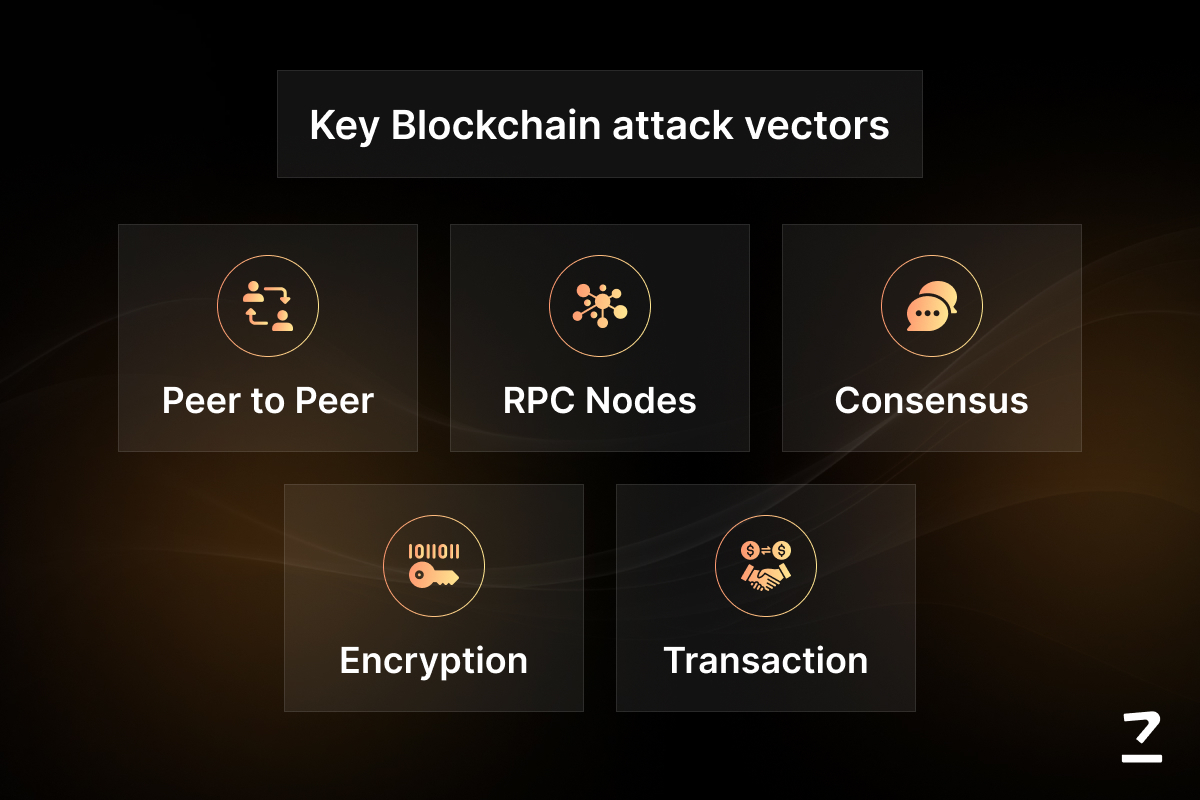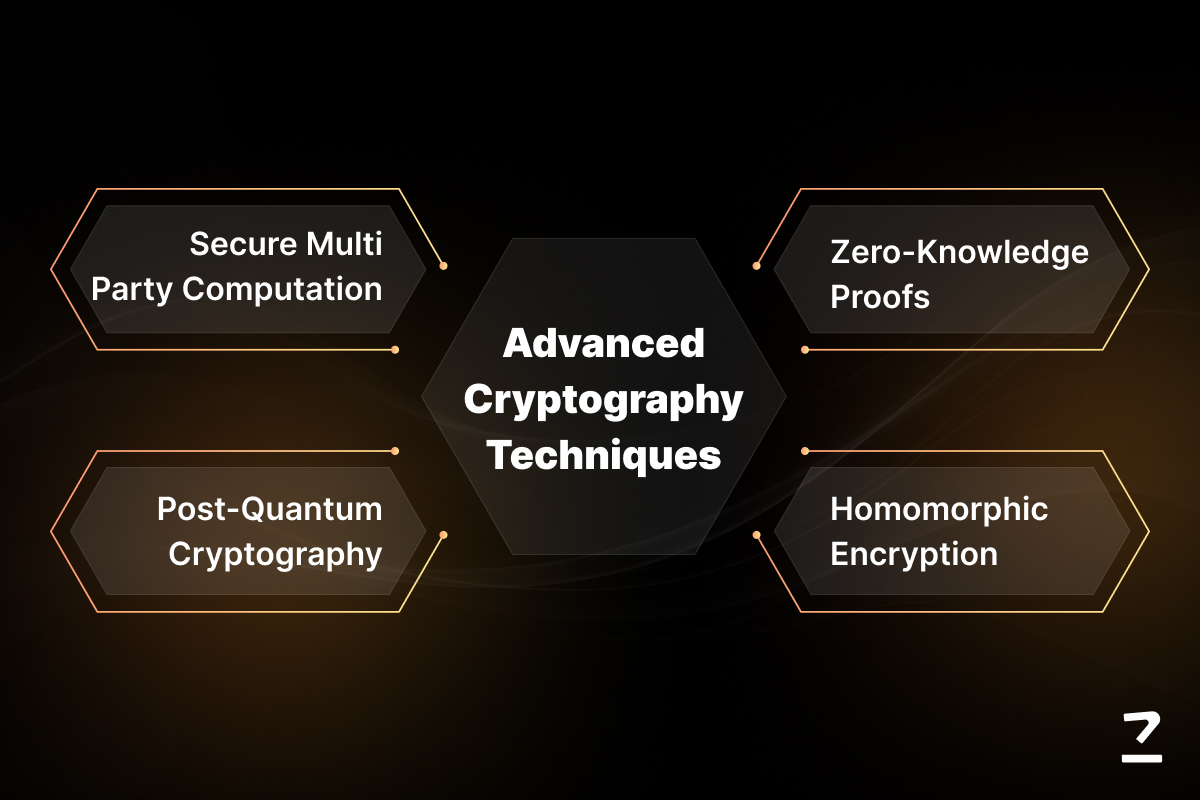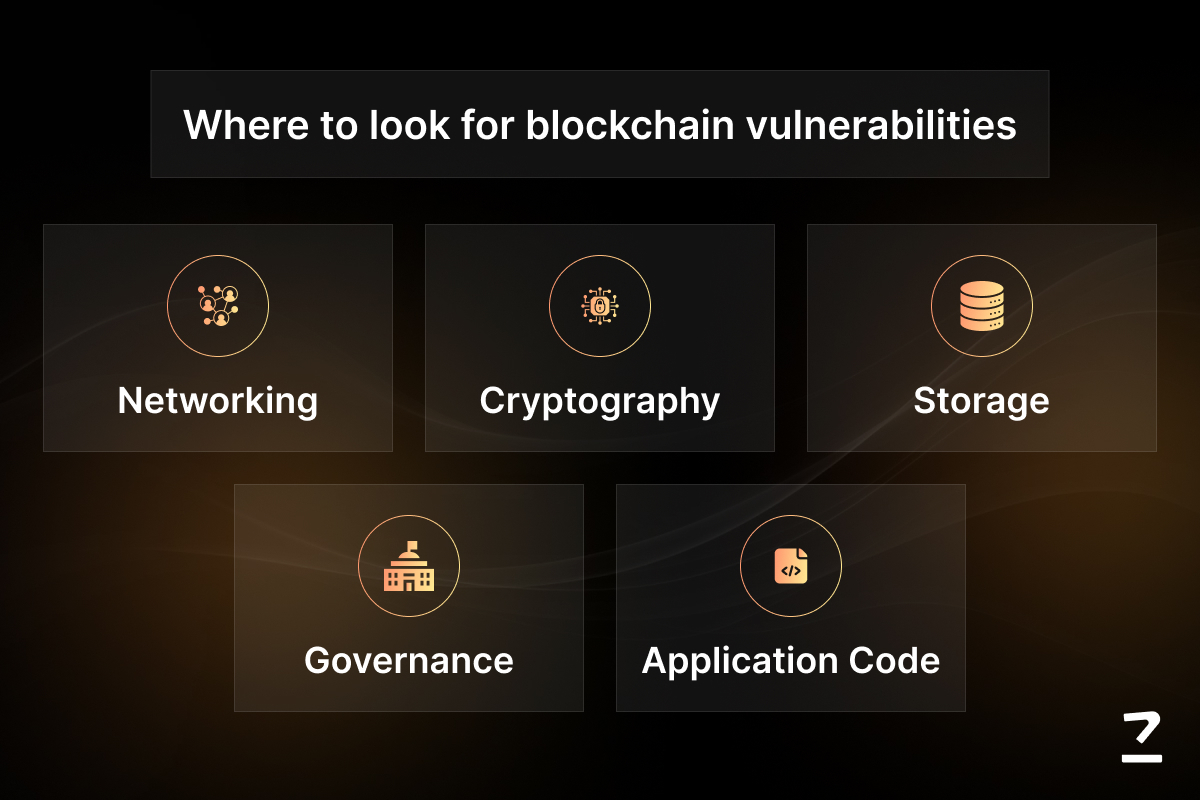SHARE THIS ARTICLE
How to Design Crypto Systems to Resist Modern Attack Vectors

Every digital system has weak points. In crypto, those weak points are especially dangerous because attackers don’t need weeks to take advantage of them. A vulnerability in a contract or a flaw in a network protocol can be exploited in minutes, and once assets are gone, there is rarely a way to reverse the damage.
Enterprises, startups, and exchanges cannot afford to treat security as an afterthought. For a blockchain development company, security architecture is no longer a “feature” but the very foundation of trust. When investors, regulators, and everyday users look at a platform, the first thing they worry about is whether it can hold up against modern threats.
This article looks at how to approach crypto system security design in a way that anticipates and resists the attack vectors we see today. The goal is not just to tick compliance boxes but to create systems that are resilient, maintainable, and ready for what’s coming next.
Why Modern Attack Vectors Demand Stronger Design
Defining Attack Vectors
Attack vectors in blockchain are simply the ways adversaries get in. Sometimes it’s a coding mistake. Sometimes it’s social engineering. Increasingly, it’s a combination of both. Unlike in traditional systems, there are no centralized failsafes in crypto. Once an exploit runs, it plays out on-chain for everyone to see.

Traditional vs. Modern Threats
A decade ago, most breaches were unsophisticated: weak passwords, unprotected wallets, insider theft. Now attackers exploit systemic flaws:
-
Manipulating oracles to feed bad data into DeFi contracts.
-
Exploiting logic flaws in cross-chain bridges.
-
Using flash loans to distort liquidity pools.
-
Crafting advanced phishing campaigns targeting admins.
| Earlier Threats | Current Threats |
| Password brute force | Oracle manipulation |
| Simple phishing emails | Cross-chain bridge hacks |
| Hot wallet raids | Flash loan exploits |
| Malware stealing private keys | Governance capture |
Chainalysis estimated that illicit crypto activity topped $40.9 billion in 2024. Most of it came from DeFi security failures rather than simple key theft. The message is clear: if you design without security in mind, you are designing to be hacked.
Network and Consensus Security
Where Protocols Fail
At the lowest level, blockchain systems are vulnerable to consensus and networking failures. If an attacker gains majority power, they can rewrite history. If a network gets flooded with bogus transactions, it can grind to a halt.
Common risks include:
-
51% attacks that let an entity reorganize the chain.
-
Sybil attacks where fake identities overwhelm honest nodes.
-
DoS campaigns that crash or delay block production.
These are not theoretical. Several proof-of-work chains have suffered 51% attacks, losing millions. And while large chains are harder to compromise, Layer 1 and Layer 2 security concerns remain constant. Bridges, rollups, and sequencers all introduce new fault lines.
How to Design Against Them
-
Distribute validators widely to make capture expensive.
-
Mix consensus styles (e.g., stake plus committee voting).
-
Run redundant nodes across geographies.
-
Implement fees and limits to block transaction spam.
A system that assumes “honest majority” without planning for edge cases is fragile. A system that designs with worst-case assumptions in mind is durable.
Smart Contract and DeFi Layer
Why Contracts Are the Favorite Target
Smart contracts run exactly as written. If there’s a flaw, attackers don’t need to guess how to exploit it; the contract tells them. In 2023 alone, more than half of all stolen funds came from contract exploits.
Common Flaws
-
Reentrancy loops where attackers drain balances.
-
Flash loans used to manipulate prices.
-
Centralized oracles feeding manipulated data.
Defensive Patterns
-
Use formal verification for high-value contracts.
-
Require multiple independent audits.
-
Apply safe coding standards like Checks-Effects-Interactions.
-
Adopt decentralized oracles that aggregate from several sources.
For anyone pursuing cryptocurrency exchange development, these principles are non-negotiable. Exchanges rely on automated contracts for liquidity pools, token swaps, and bridges. Without strong smart contract security, exchanges become prime targets.
Key Management and Wallet Security
When it comes to crypto, losing keys equals losing funds. Attackers know this and target wallets relentlessly. Crypto wallet security has to be airtight, especially for custodians and exchanges that manage user funds.
Key Threats
-
Phishing campaigns to steal login credentials.
-
Malware targeting clipboard or keystrokes.
-
Poorly protected seed phrases.
Practical Defenses
-
Hardware Security Modules (HSMs) for critical keys.
-
Multi-Party Computation (MPC) wallets to split usage.
-
Multi-signature rules for withdrawals.
-
Cold storage for long-term holdings.
| Attack Vector | Design Response |
| Phishing | Hardware 2FA and user training |
| Malware | Cold, air-gapped storage |
| Insider misuse | Multi-sig approvals |
| Lost seeds | Encrypted and redundant backups |
Future-Proofing with Advanced Cryptography

Preparing for Quantum Threats
The cryptography securing today’s blockchains may not hold up forever. Quantum computing, still in its early stages, poses a real risk to algorithms like ECDSA. The solution is to prepare for post-quantum cryptography in blockchain systems.
Steps to Take Now
-
Use modular crypto libraries that can be swapped as standards evolve.
-
Track NIST’s PQC recommendations.
-
Begin testing hybrid systems that combine classical and quantum-safe schemes.
Future-proofing doesn’t mean jumping to untested algorithms right away. It means leaving room to adapt without ripping apart the entire architecture.
Governance, Compliance, and Operations
Even a perfect code fails if people are careless. Human error, governance flaws, and compliance gaps are consistent entry points.
Strengthening Governance
-
Run periodic audits, even for trusted protocols.
-
Build clear incident response playbooks.
-
Design transparent governance systems to avoid insider capture.
Compliance as a Feature
Institutions expect platforms to meet global standards like ISO 27001 and GDPR. A blockchain development company that builds compliance into architecture signals maturity to regulators and investors.
Case Studies and Lessons
Ronin Bridge
-
Attackers stole over $600M by compromising validator keys.
-
Lesson: Relying on too few validators is a design flaw. Expand and decentralize.
Poly Network
-
Exploited contract logic flaws to redirect funds.
-
Lesson: Proper permissioning and audits would have closed the gap.
Exchange Wallet Breaches
-
Hot wallets with large balances remain constant targets.
-
Lesson: Cold storage and withdrawal limits reduce exposure.
These incidents underline that the crypto system security design must anticipate both technical and operational weaknesses.

Actionable Checklist for Teams
-
Audit every major contract before deployment.
-
Use multi-sig and MPC for key operations.
-
Design for both Layer 1 and Layer 2 security concerns.
-
Incorporate post-quantum cryptography in blockchain planning.
-
Partner with a seasoned blockchain development company.
-
Monitor on-chain activity for anomalies.
-
Train users and staff to resist phishing.
Conclusion
Crypto attacks are only growing sharper. Designing with resilience in mind is the only sustainable path. That means anticipating modern blockchain attack vectors, hardening smart contract security, improving crypto wallet security, and planning ahead for post-quantum cryptography in blockchain.
For enterprises and exchanges, secure cryptocurrency exchange development starts with the right architecture and ends with trusted operations. Working with an experienced blockchain development company makes the difference between systems that crumble and systems that stand strong.
At Codezeros, we specialize in building secure, future-ready blockchain solutions. From designing exchanges to fortifying DeFi protocols, our team ensures that your project is architected with resilience and compliance from day one. If you’re ready to design systems that can withstand today’s threats and tomorrow’s challenges, connect with Codezeros and let’s build securely together.
Frequently Asked Questions
What are the most common blockchain attack vectors?
Smart contract flaws, oracle manipulation, Sybil and 51% attacks, and phishing.
How do you secure cryptocurrency exchange development?
Use cold storage, audited contracts, HSM-backed keys, and robust compliance frameworks.
Why care about post-quantum cryptography in blockchain today?
Quantum threats may not be immediate, but building flexibility now avoids rushed and unsafe migrations later.
How are Layer 1 and Layer 2 security risks different?
Layer 1 deals with consensus and validator integrity, while Layer 2 introduces bridge and sequencer vulnerabilities.
Why are smart contract audits essential?
They catch logic errors and vulnerabilities that have historically caused the majority of DeFi hacks.
Post Author

Explore Deep's insightful blog posts that help businesses stay ahead of the curve, explore new possibilities, and unlock the full potential of blockchain technology
Build crypto systems with Codezeros that prioritize blockchain security, resilience, and future-ready compliance frameworks.
Codezeros helps enterprises, exchanges, and DeFi platforms implement resilient system design, from secure smart contracts to robust key management. Work with us to future-proof your crypto infrastructure against modern attack vectors and compliance challenges.



